China's Export, Import Growth Seen Moderating in July
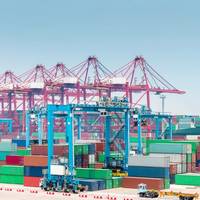
China’s robust export growth likely moderated in July amid an acceleration in COVID-19 cases globally and continuing severe pressure on global supply chains, a Reuters poll showed on Friday.Although there are signs China’s strong industrial recovery in the first half of the year may be losing some momentum, overseas demand has remained strong in recent months even as factories in many countries return from lockdowns.Headline trade numbers are also being helped by the statistical…
China Bans Open-Loop Scrubber Discharge at 'Some' Ports
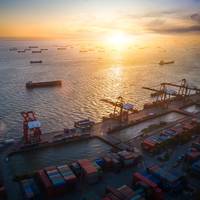
China's maritime authority has banned the discharge of "wash water" used in ships to strip hazardous sulphur emissions from engine exhaust gases from Jan. 1 for some ports, according to a government document reviewed by Reuters on Tuesday.The ban on water discharge from so-called open-loop scrubbers is part of an effort to prepare for International Maritime Organization (IMO) rules that will ban ships from using fuel oil with a sulphur content of more than 0.5 percent from 2020…
Scrubbers Market to Surpass $8 Bln by 2024 -Report
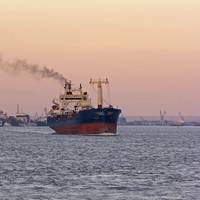
The market for marine exhaust gas cleaning systems, also known as scrubbers, is expected to continue generating momentum in the years ahead amid increasing concern toward maritime pollution and new environmental regulations. The global market share for marine scrubbers is predicted to surpass $8 billion by 2024, according to a report by Global Market Insights.As per the latest International Maritime Organization (IMO) legislation, effective from January 1, 2020, the maximum limit of sulphur in fuel oil used on board ships will be 0.5 percent m/m…
China to Slash Ship Emissions in Ports Earlier than Expected
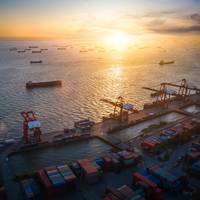
Major ports around the Yangtze River Delta will impose tighter rules on emissions from vessels in and around the ports starting on Oct. 1, a newspaper run by China's Ministry of Transport said in a report.The ports affected are Shanghai, the world's biggest container port, as well as ports in Jiangsu and Zhejiang provinces. The report in the China Water Transport newspaper was dated Aug. 24.That is earlier than the implementation date of Jan. 1, 2019 announced previously.China's…
Sanchi Disaster Probe Ends in Split Verdict
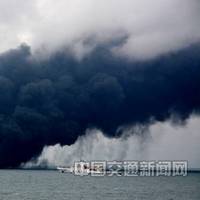
A committee investigating a collision between an Iranian tanker and a Chinese freighter has come to diverging conclusions over the causes of the worst oil ship disaster in decades, Iran's state television reported on Saturday.The Panama-registered Sanchi, run by Iran's top oil shipping operator NITC, collided with the CF Crystal, registered in Hong Kong, off the coast of China near Shanghai and the mouth of the Yangtze River Delta on Jan. 6.The Sanchi sank on Jan. 14 after burning for several days.
Bodies of Three Sanchi Crew Members Identified

The bodies of three of the crew of the Sanchi, the tanker involved in the worst oil ship disaster in decades off the coast of China, have been identified, the Iranian Students’ News Agency (ISNA) reported Saturday. The three crew members identified are Milad Aravi, Majid Naqian and Mohammad Kavousi, the agency reported. The semi-official Fars news agency said that the three were Iranian. The Iranian government is trying to get the bodies of the three crew members back to Iran, according to ISNA.
China Agrees to Joint Sanchi Collision Probe
The maritime authorities of China, Panama, Iran and Hong Kong on Thursday signed an agreement to jointly investigate a collision in the East China Sea that caused the worst oil ship disaster in decades, according to China's Ministry of Transport. Investigation work will be organised by a joint team composed of representatives of all four signatories to the agreement, a brief statement from the ministry said. The Panama-registered Sanchi tanker (IMO:9356608), run by Iran's top oil shipping operator, collided on Jan. 6 with the CF Crystal (IMO:9497050) about 160 nautical miles off the coast of China near Shanghai and the mouth of the Yangtze River Delta. The Sanchi, which was sailing from Iran to South Korea, carrying 136,000 tonnes of condensate, an ultra light crude, sank on Jan.
Sanchi's Black Box Opened -Iranian media
The black boxes for the tanker Sanchi and the freighter CF Crystal, the two vessels that collided in the worst oil ship disaster in decades, have been opened, the Iranian Students’ News Agency (ISNA) reported on Wednesday. Officials from China, Iran, and Panama were present when the black boxes were opened, Hadi Haqshenas, maritime affairs deputy at Iran’s Ports and Maritime Organization, was quoted as saying by ISNA. The report did not say where that happened. “Clarifying the ultimate results of the deciphering process takes time and it could take months,” Haqshenas said, according to ISNA. The Sanchi, run by Iran’s top oil shipping operator, collided with the CF Crystal about 160 nautical miles off the coast of China near Shanghai and the mouth of the Yangtze River Delta on Jan.
Tanker Continues to Burn in East China Sea
Strong winds, high waves and toxic gases are hindering dozens of rescue boats struggling to locate missing sailors from a stricken oil tanker in the East China Sea and to extinguish a fire that has burned for the past three days on the ship. The poor conditions, with rain and waves as high as 3 metres (10 feet), frustrated efforts to tame the fire and search for the 31 remaining tanker crew members, China's Ministry of Transport said in a statement on Tuesday. The flames were forcing the South Korean Coast Guard's search and rescue team to stay as far as 3 miles (4.8 km) away from the tanker, two South Korean officials told Reuters.
Salvage, Rescue Crews Battle Oil Tanker Fire
Body of crew member found on board; casualty might be worst tanker oil spill since 1991 and concerns grow that tanker may explode, sink. Rescue crews wrestled to bring a blaze on an Iranian oil tanker off China's east coast under control on Monday as fire raged for a second day following a collision with a grain ship, while the body of one of the 32 missing crew members was found on aboard. Concerns were growing that the tanker, which hit a freight ship on Saturday night in the East China Sea and burst into flames, may explode and sink, the official China Central Television (CCTV) said on Monday, citing experts on the rescue team. Poor weather continued to hamper the rescue work, Lu Kang, a spokesman at China's foreign ministry, told a regular news briefing.
Ship Collision; Iranian Tanker Burns; 32 Missing
A tanker carrying Iranian oil and run by the country's top oil shipping firm was ablaze and spewing cargo into the East China Sea on Sunday after colliding with a Chinese freight ship, leaving the tanker's 32 crew members missing, the Chinese government said.Thick clouds of dark smoke could be seen billowing out of the Sanchi tanker engulfing the vessel as rescue efforts were hampered by bad weather and fire on and around the ship, Mohammad Rastad, head of Iran's Ports and Maritime Organization, told Iranian television.The Sanchi, run by the country's top oil shipping operator, collided with the CF Crystal about 160 nautical miles off the coast near Shanghai and the mouth of the Yangtze River Delta on Saturday evening…
China to Enforce Low Sulphur ECA in Yangtze River Delta
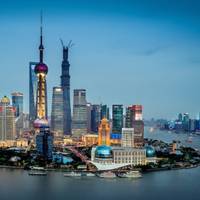
Vessels calling ports in China’s Yangtze River Delta, including Shanghai, will be required to burn low sulphur fuel while at berth from April 1 this year. China’s Ministry of Transport announced in December last year plans to set up three ECAs: the Pearl River Delta, Yangtze River Delta and Bohai-rim waters. The Yangtze River Delta is the first of the three major port areas to make a 0.5 percent ECA compulsory, to be enforced in Yangtze River core ports: Shanghai port, Zhoushan port…
China to Implement Emission Control Measures
The Chinese Ministry of Transport has announced that from April 1, 2016, vessels ‘at berth’ at the core ports in the Yangtze River Delta (YRD) emission control area (ECA) must use fuel oil containing 0.5 percent sulphur or less. These core ports are Shanghai, Ningbo-Zhoushan, Suzhou and Nantong. Ships entering the ECA are encouraged to use fuel oil containing 0.5 percent sulphur or less. Ships ‘at berth’ at ports in the ECA must use fuel oil containing 0.1 percent sulphur or less. The exact details of how the measures will be implemented (i.e., enforcement, penalties, the definition of ‘at berth’, and requirements for fuel change-over, verification of fuel quality, records and documentation) are not yet available.
Yangtze to Ship Direct Containers
Taicang Container Lines Co. Ltd has rolled out the first direct container shipping line linking China's Yangtze River basin and Southeast Asia, reports Xinhua. The container ship departs once a week from and arrives at Taicang Port in east China's Jiangsu Province, and will travel as far as Laem Chabang and Bangkok, Thailand, and Ho Chi Minh, Vietnam. Taichang Port is the river's largest container port. The line is expected to help import and export companies along the Yangtze River and the Yangtze River Delta save about 50 million yuan (about 7.6 million U.S. dollars) a year in logistics costs. China has been ASEAN’s largest trading partner since 2009, while ASEAN has been the third-largest trading partner of China since 2011, largely thanks to the Free Trade Agreement between the two.
Lower Sulphur Fuel Requirements within Chinese Emission Control Areas
On 4 December 2015, the Chinese government announced that it designated the Pearl River Delta, the Yangtze River Delta and the Bohai Rim waters as the emission control areas, and the limit for sulphur content of fuel oils used onboard ships operating within the aforementioned emission control areas will start to be strengthened to 0.5% m/m. The URL for the official announcement from the Chinese government is available in Chinese only.
China Ramping Up Ship Emission Controls
China will introduce tough controls on ship emissions at three key port areas from January to reduce sulphur dioxide which results in acid rain, causing respiratory difficulties and sometimes premature death, said the Ministry of Transport. If strictly implemented the move would force oil suppliers to increase the supply of cleaner marine fuel, industry experts said. The ministry gave no details on how the new emissions rules would be enforced or penalties for non-compliance. The new rules will apply to merchant ships navigating or anchoring in the waters of Pearl River Delta, Yangtze River Delta and the Bohai Bay rim, with a goal to cut sulphur dioxide by 65 percent by 2020 from the 2015 level, according to a document issued by the Ministry of Transport.
Shanghai 6th Best Shipping Center Globally
Shanghai has moved up the rankings of the world’s top shipping centers to sixth place, surpassing Dubai thanks to Free Trade Zone regulations and the Belt and Road Initiative, according to a report and index looking at the importance of the world’s key shipping centers. The Xinhua-Baltic Exchange International Shipping Centers Index 2015 was jointly published Friday by Xinhua News Agency and the London-based Baltic Exchange, an independent provider of ocean freight index. The report covers 46 of the world’s largest ports and cities as a guide showing the relative performances of these shipping centers around the world. The index evaluates criteria including maritime services…
LYG-PSA Container Terminal Opening
LYG-PSA Container Terminal (LPCT) was officially opened today by Lianyungang Municipal Party Committee Member & Director-General of Lianyungang Port Authority Mr Wu Yi Qiao, Lianyungang Port Group (LPG) Chairman Mr Bai Li Qun and PSA International Group CEO Mr Tan Chong Meng. LPCT marks PSA International’s first collaboration with Lianyungang Port Group. The opening ceremony, which took place at the Jiangsu Haizhou Bay View Hotel in Lianyungang, China, was witnessed by over 200 distinguished guests from the ports and shipping industry and government agencies in Lianyungang. Mr Wu Yi Qiao, Lianyungang Municipal Party Committee Member & Director-General of Lianyungang Port Authority, commented, “The partnership between LPG and PSA brings in unprecedented potential for development.
China Shipbuilding Industry Midgets Reigned In

China signaled that it will cut its vast shipyard army to get industrial growth back on a healthy track this year, as its earning ability falters amid cheap vessel prices, blind expansion and speculation in the shipbuilding sector, according to Xinhua. China will drastically curb the number of shipyards, docks, berths and maintenance facilities it opens, reports Xinhua, citing Li Dong, deputy director-general at the department of equipment industry at the Ministry of Industry and Information Technology.
Yangtze River Delta Shipbuilders Floundering
China's Ministry of Industry and Information Technology reports that orders in first half 2012 are down by 50.3% year-on-year. The volume of handling orders was a mere 125.87 million DWT by the end of June, down 30.7 percent year-on-year, which can easily lead to the assumption that some shipbuilders will not be able to keep operating in the following months. "We have not received any new orders. If the situation continues, we will have only one ship to build in the second half of this year," says Pan Haiwei, general manager of Wu Zhou Shipbuilding Industry Co Ltd in central Zhejiang. Shipbuilders in neighboring Jiangsu province are also barely staying afloat.
Major China Terminal Signs Up with APM
Leaders from the Ningbo Port Group and APM Terminals were on hand in Copenhagen to sign a major agreement that creates a new level of cooperation in the fastest growing, deepwater, container port in the world. Ningbo is a major gateway port in Eastern China and the Zhejiang Province. It is the 6th largest container port in the world with strong growth. Container throughput in Ningbo grew 17% annually from 2006 to 2010 and reached 14.5 million TEU in 2011. At the current growth rate, Ningbo capacity utilization will exceed 80% by the end of 2012, and the Meishan project for berths 3-5 represents the future source of capacity. Meishan Container Terminal is the newest container terminal in Ningbo.
Chinese Mega Ports Increased in Number in 2011
The number of such ports was 22 in 2010, and 12 in 2006. Among the 26 100-million-ton handling capacity ports, 17 are costal and nine are inland, said a statistical bulletin, which was commissioned by China's Ministry of Transport and featured in 'China Daily'. Ningbo-Zhoushan Port, in east China's Zhejiang province, came out on top, with an annual handling capacity of 694 million tons of throughput in 2011, according to the statistical bulletin. Eleven ports on the list are located in the Yangtze River Delta, and two are in the central and western regions of China: Chongqing Port and Beibu Gulf Port. China has also seen a strong momentum…
Shipbuilding – China Hopeful to Double Output
China's shipbuilding industry may double its scale in the next four years on growth potential in sea transport and marine economy, and Shanghai is expected to play a big role toward meeting the goal. By the end of 2015, the market size of shipbuilders and marine equipment makers may hit 1.2 trillion yuan (US$190 billion) with the value of exports touching US$80 billion, the Ministry of Industry and Information Technology said yesterday when it released a guideline of the 12th Five-Year Plan for the shipping industry. Chinese shipyards may take up at least five spots among the world's top 10 shipbuilders and the country's 10 biggest domestic shipbuilders may contribute more than 70 percent of the total output.












